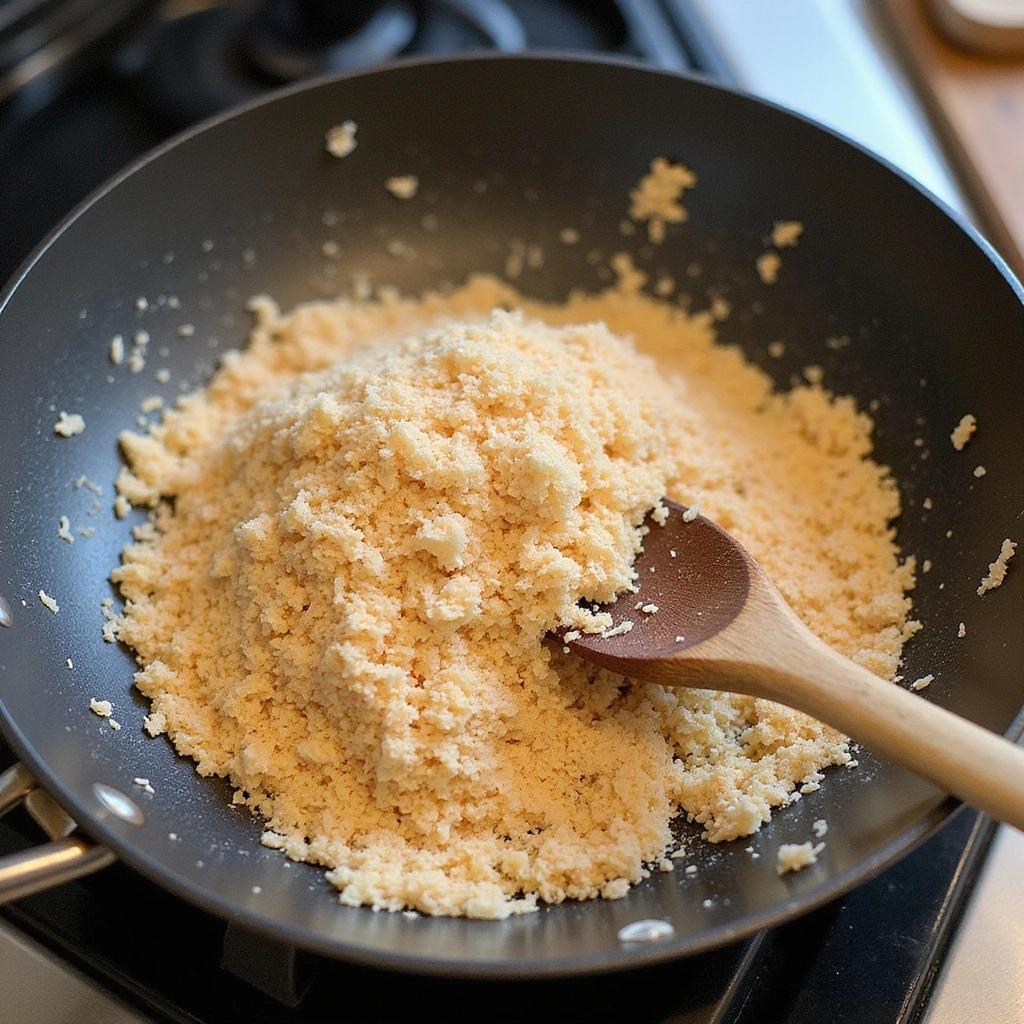Coffee with coconut milk is a delightful twist on the traditional coffee experience that captivates the senses with its creamy texture and tropical flavor.
The rich, nutty essence of coconut milk harmonizes beautifully with the robust notes of coffee, creating a drink that is both comforting and refreshing.
I first encountered this delightful combination during a beach vacation, where the local café served it iced with a sprinkle of cinnamon.
Whether you’re seeking a dairy-free alternative or simply craving something new, this creamy coffee drink is sure to become a favorite in your morning routine.
The History and Cultural Significance
• Coffee with coconut milk has its roots in tropical regions, particularly in Southeast Asia and the Caribbean, where coconut palms thrive.
• The dish evolved as coffee culture spread globally, with coconut milk being embraced as a creamy alternative to dairy, especially in vegan and health-conscious communities.
• In many cultures, this drink is enjoyed during festive occasions, symbolizing hospitality and the blending of flavors from different culinary traditions.
• While variations exist in how it’s prepared, the essential characteristic of using coconut milk to create a creamy texture remains a common thread throughout.
Recipe Overview
Nutritional Information (per serving)
Ingredients
Essential Equipment Guide
Coffee Maker: A reliable coffee maker is essential for brewing a rich cup of coffee. Look for one that offers temperature control to enhance extraction and flavor.
Blender: A high-powered blender is crucial for achieving a creamy texture when mixing coconut milk into your coffee. Alternatives like immersion blenders can work but may not create as smooth a result.
Measuring Cups and Spoons: Accurate measurements are key to balancing flavors, especially when combining coffee and coconut milk. Invest in a set with clear markings for ease of use.
Preparation Methods
Brewing Coffee: Start with high-quality coffee beans and grind them just before brewing for maximum flavor. Use the recommended water temperature of 195-205°F for optimal extraction. Adjust the coffee-to-water ratio according to your taste preference.
Mixing Coconut Milk: Gently heat coconut milk before adding it to coffee to enhance the creaminess. Whisk or blend the mixture to ensure a smooth texture without lumps, which is crucial for a pleasant drinking experience.
Garnishing: Toast shredded coconut in a dry skillet until golden brown for added flavor and crunch. This simple step significantly elevates the visual and textural appeal of your drink.
Step 1: Brew the Coffee

Begin by brewing your coffee using a coffee maker or French press.
Use freshly ground coffee beans for the best flavor.
Aim for a strong brew to balance the creaminess of the coconut milk.
Keep the brewed coffee warm while you prepare the coconut milk.
Step 2: Heat the Coconut Milk

Pour the coconut milk into a small saucepan over low heat.
Heat gently until warm, avoiding boiling to preserve its creamy texture.
Stir occasionally to prevent sticking and ensure even warming.
Remove from heat just before it starts to bubble.
Step 3: Combine Coffee and Coconut Milk

In a large mug, pour the brewed coffee and add the warmed coconut milk.
Stir well to combine, ensuring the coffee is fully integrated with the coconut milk.
Taste and adjust sweetness with sugar if desired.
This step is crucial for achieving a balanced flavor.
Step 4: Add Vanilla Extract

Add the vanilla extract to the coffee mixture and stir again.
This enhances the overall flavor profile, adding depth and complexity.
Make sure to incorporate it well for an even distribution of flavor.
The aroma should become enticing as you mix.
Step 5: Garnish with Cinnamon

Sprinkle cinnamon over the top of the coffee drink just before serving.
This adds a warm aroma and visual appeal to the drink.
Consider using a fine mesh sieve for an even distribution.
Serve immediately to enjoy the fresh flavors.
Step 6: Toast Shredded Coconut

In a dry skillet, toast shredded coconut over medium heat.
Stir frequently until golden brown, about 3-5 minutes.
Be careful not to let it burn, as it can turn bitter quickly.
Remove from heat and let cool slightly before using as garnish.
Step 7: Serve and Enjoy

Pour the final coffee drink into serving mugs, topping each with toasted coconut.
This adds a crunchy texture that complements the creaminess.
Serve hot and enjoy the delightful blend of flavors.
Consider pairing it with a light snack for a complete experience.
Step 8: Clean Up

After enjoying your drink, clean your utensils and equipment promptly.
Coffee residue can be tough to remove if left to sit.
Wash the coffee maker and blender according to the manufacturer’s instructions.
This keeps your tools in good condition for next time.
Critical Timing and Temperature Guide
Brewing Coffee: Brew coffee for about 4-5 minutes, ensuring the water is between 195-205°F for optimal extraction. Look for a rich color and aroma as indicators of doneness. Avoid over-brewing to prevent bitterness.
Heating Coconut Milk: Heat coconut milk for approximately 2-3 minutes over low heat until it’s warm but not boiling. The texture should be smooth with no lumps. Boiling can cause separation and affect creaminess.
Toasting Coconut: Toast shredded coconut for 3-5 minutes, stirring constantly until golden brown. The color change is your cue to remove it from the heat. Burnt coconut will impart a bitter taste.
Pro Tips for Coffee With Coconut Milk Recipes Creamy Dairy Free Drink
• Ingredient Selection: Opt for fresh, high-quality coffee beans and organic coconut milk for the best flavor.
• Preparation Secret: Gently heating the coconut milk before adding it to the coffee enhances the overall creaminess.
• Temperature Management: Ensure your coffee is brewed at the right temperature to prevent bitterness and ensure full flavor extraction.
• Texture Enhancement: Blending the coconut milk with coffee creates a frothy texture that elevates the drink.
• Flavor Layering: Experiment with different spices like nutmeg or cardamom to add complexity to your drink.
• Make-Ahead Strategies: Brew coffee in advance and store it in the fridge for quick preparation later.
• Restaurant-Quality Finishing Touches: Garnish with fresh herbs or a drizzle of honey for an elegant presentation.
• Equipment Optimization: Use a high-speed blender for the smoothest texture when combining coconut milk and coffee.
Troubleshooting Common Issues
• Coconut Milk Separation: This can happen if the coconut milk is overheated. To fix, ensure you heat it gently and mix thoroughly before combining with coffee.
• Too Sweet or Not Sweet Enough: Adjust sugar to taste after mixing the coffee and coconut milk. Start with a small amount and add more gradually.
• Bitterness in Coffee: Over-brewing can lead to bitterness. Use a timer and follow recommended brewing times to avoid this issue.
• Lumpy Texture: If coconut milk lumps occur, blend the mixture thoroughly after heating. A blender or whisk can help achieve a smooth consistency.
• Insufficient Creaminess: For a richer drink, use full-fat coconut milk and consider blending it for added frothiness.
• Flavor Imbalance: Experiment with different spice levels, adjusting cinnamon and vanilla to find the perfect balance.
Variations and Regional Differences
• Thai Iced Coffee: This variation includes sweetened condensed milk and is served over ice, offering a unique balance of sweetness and creaminess.
• Coconut Mocha: Adding cocoa powder or chocolate syrup creates a rich mocha flavor, perfect for chocolate lovers.
• Spiced Coconut Coffee: Incorporating spices like cardamom or ginger for a warm, aromatic twist that reflects traditional Middle Eastern coffee customs.
• Modern Interpretations: Many contemporary recipes adapt this drink by using flavored coconut milk or adding protein powders for a health boost.
Food Science Behind the Recipe
• Creaminess and Emulsification: Coconut milk contains fats that help create an emulsion with coffee, resulting in a creamy texture. Understanding emulsification can help you achieve the perfect blend without separation.
• Flavor Extraction: The Maillard reaction occurs during coffee brewing, enhancing flavors. Using the right brewing temperature maximizes this process.
• Aroma Development: Heating coconut milk releases its aromatic compounds, contributing to the drink’s overall flavor profile. Proper heating techniques can enhance these aromatic qualities.
Frequently Asked Questions
What’s the most common mistake people make when preparing Coffee with Coconut Milk? The most common mistake is overheating coconut milk, which can cause separation and a grainy texture. Always heat gently and avoid boiling.
Can I prepare components of this dish in advance? Yes, you can brew coffee in advance and refrigerate it for up to 3 days. Reheat before serving for the best flavor.
How do I adapt this recipe for dietary restrictions? For a nut-free version, ensure your coconut milk is certified nut-free. You can also replace sugar with honey or maple syrup for different sweetening options.
What’s the best way to store and reheat leftovers? Store any leftover coffee in an airtight container in the fridge. Reheat gently on the stove or in the microwave, stirring occasionally.
Can I freeze this dish? Freezing brewed coffee is possible, but coconut milk does not freeze well. Freeze coffee in ice cube trays for future use.
What wine or beverages pair best with this dish? A light dessert wine or a spiced rum can complement the tropical flavors of the drink.
How can I scale this recipe up for a crowd? Simply multiply each ingredient by the number of servings desired, ensuring you have a large enough coffee maker for brewing multiple cups at once.
What side dishes complement this recipe best? Light pastries, coconut macaroons, or fruit salads pair wonderfully with this creamy drink.
How do professional chefs elevate this dish for restaurant service? Professional chefs often use high-quality artisanal coffee and may create unique flavored syrups to enhance the drink’s complexity.
Serving and Presentation Guide
• Traditional Presentation: Serve in a clear glass mug to showcase the beautiful mix of coffee and coconut milk. Garnish with toasted coconut and a cinnamon stick for an authentic touch.
• Modern Plating Ideas: Use minimalist ceramic cups and arrange with a side of coconut macaroons for a chic presentation.
• Accompaniment Suggestions: Pair with a light pastry or a slice of banana bread to complement the flavors.
• Special Occasion Presentation: For celebrations, serve in elegant glassware with decorative garnishes like edible flowers or a drizzle of caramel sauce for a festive touch.
Conclusion
I hope you give this Coffee with Coconut Milk recipe a try and enjoy its delightful flavors.
It’s a wonderful way to start your day or enjoy a midday treat.
The combination of rich coffee and creamy coconut milk is truly a match made in heaven.







